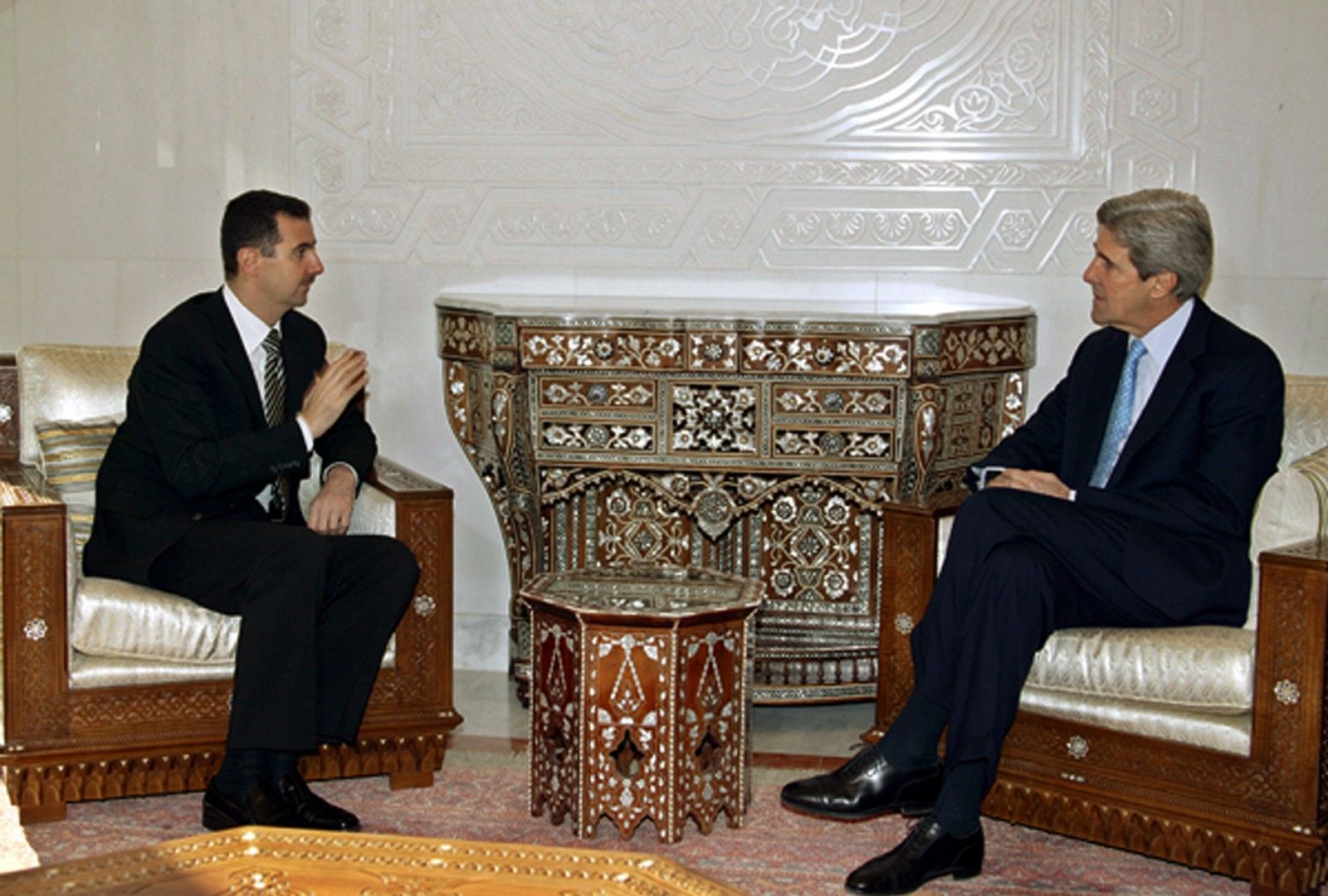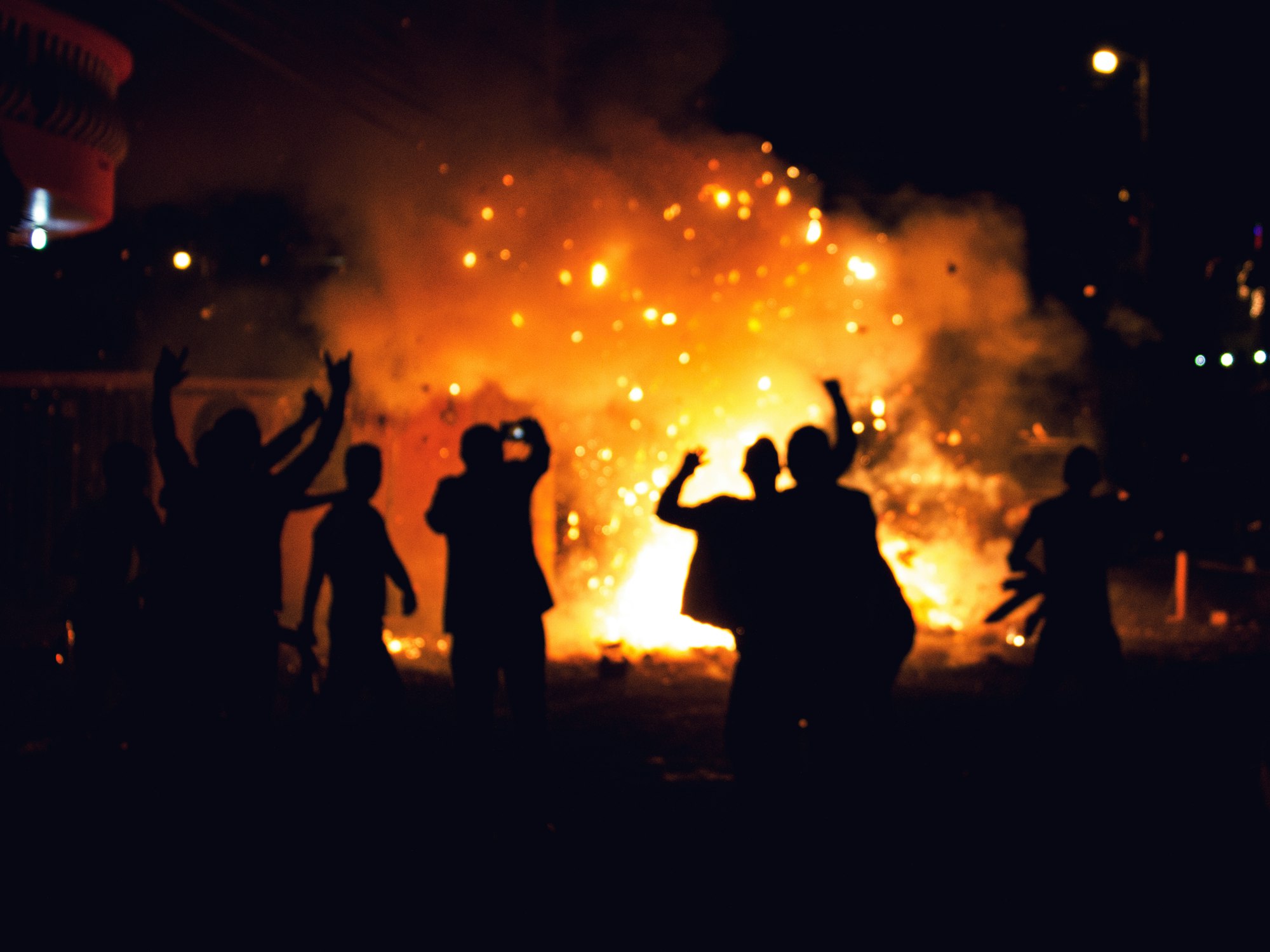Leaked US diplomatic cables show that the US sought to undermine the Assad regime nearly a decade ago. But that’s not the whole story. In 2011, as peaceful protestors rallied across Syria, Assad was courted by the Obama administration as a potential client and regional partner. Only because the US eventually abandoned him, did he revert fully to the trappings of Russian and Iranian power. Yet in supporting Assad’s state-terrorism in the name of fighting terror, the new Russia-Iran military axis in Syria is falling into a trap of its own making. Rather than constituting a new ‘anti-imperialist’ front, the Russia-Iran alliance could see the conflict escalate into a protracted regional, sectarian war of attrition culminating in the permanent dismemberment of Syria.
Russia’s invasion of Syria has provoked excitement amongst some antiwar activists, who see Putin’s macho muscle-flexing in the Middle East as a welcome geopolitical check on American hegemony.
But just because the United States is — as Boston University historian and military veteran Professor Andrew Bacevich has shown— the world’s pre-eminent imperial superpower, that doesn’t make angels out of its rivals.
Russia Today (RT) and Press TV (Iran’s satellite news channel) would have us believe that Russia and Iran are waging a Good ‘war on terror’ in Syria.
In reality, both Russia and Iran are, like the US, neo-imperial state structures engaging in geopolitical expansionism.
Without an ounce of shame, the Russians and Iranians have eagerly co-opted the language of the US-led ‘war on terror’ to justify their own imperial violence in Syria.
It is not the ‘war on terror’ they oppose, but merely US encroachment on their regional interests.
Secret State Department cables and other confidential documents obtained by Wikileaks have been cited by progressive media to demonstrate the US role in ramping up hostilities toward Syria almost a decade ago.
Yet little attention has been paid to other secret cables revealing that such pressure was merely part of a wider strategy designed to pull Syrian President Bashar al-Assad into the orbit of American power — a strategy that accelerated under President Barack Obama.
This exclusive investigation examines these leaked diplomatic cables holistically in the context of credible, independent reporting on culpability for violence in the Syrian conflict.
While the United States government paints itself as a friend of the Syrian people, the cables show that the Obama administration courted Assad as a potential regional partner for a range of strategic reasons, and until the last minute gave him the green light to execute considerable atrocities against peaceful protestors.
Obama’s shift to regime-change in Syria was motivated not by concern for Syrian lives, but by the recognition that the previous strategy of engagement through pressure had failed to mould Assad into a reliable and ‘stable’ dictator.
Simultaneously, far from vindicating Russia and Iran, this investigation exposes their role in escalating Assad’s state-terrorism to protect their own narrow strategic goals. Rather than opposing US hegemony with a view to pursue an alternative, progressive paradigm, their geopolitical goals are simply to displace US hegemony in pursuit of their own interests.
Putin, Khamenei and Assad sitting in a tree
“If it looks like a terrorist, if it acts like a terrorist, if it walks like a terrorist, if it fights like a terrorist, it’s a terrorist, right?” said Russian foreign minister Sergey Lavrov on the second day of airstrikes.
“We will continue our economic and political support as well as our [provision of] military advice [to Syria] until the complete victory over terrorism and its supporters,” said Iranian MP Alaeddin Boroujerdi, chairman of Iranian Parliament’s National Security and Foreign Policy Committee, in a meeting last week with President Bashar al-Assad.
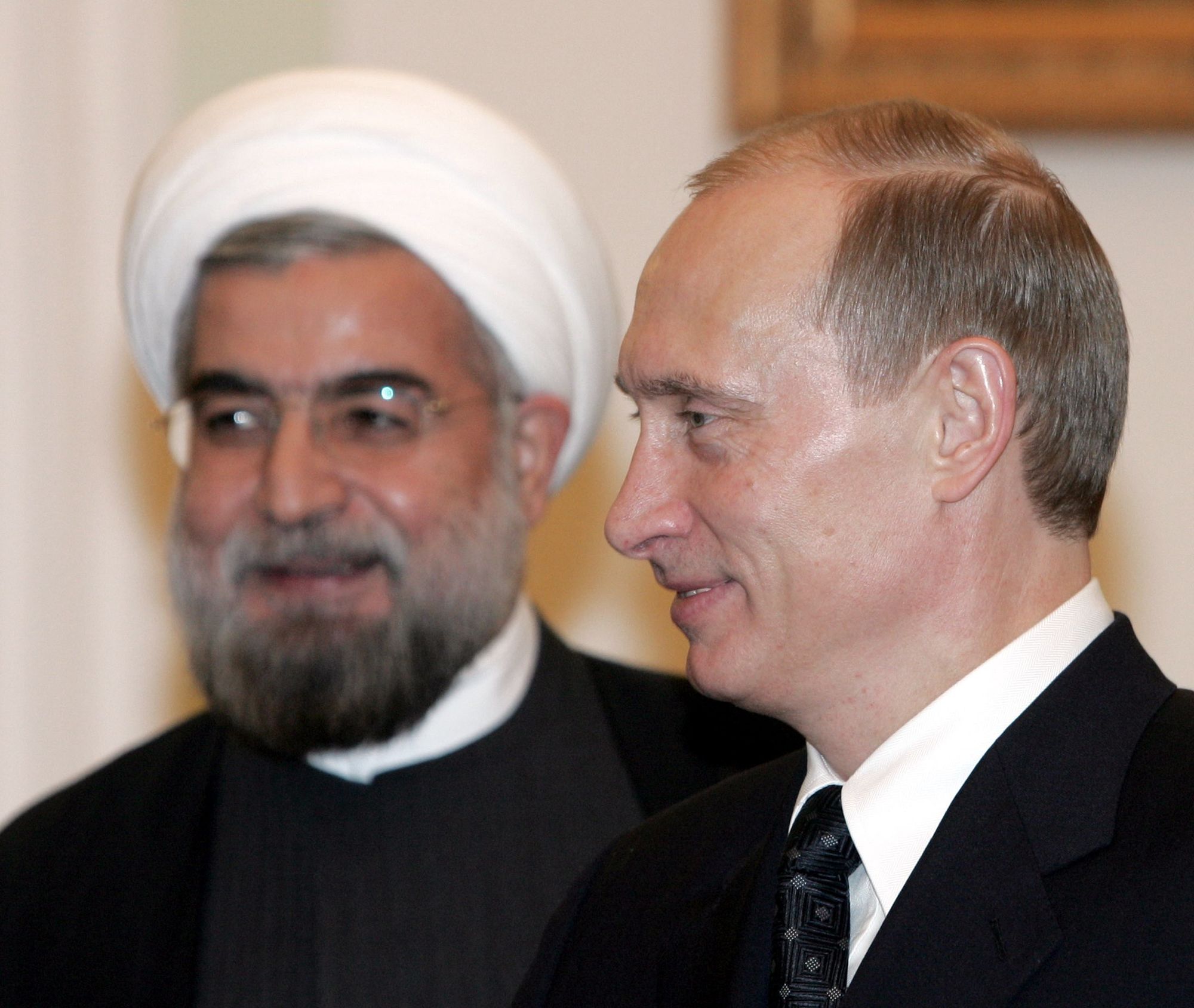
But let’s get real. Terrorism is the use of violence against civilians for political motives.
Just as the US nodded and winked in the face of its anti-ISIS coalition allies who were busily sponsoring al-Qaeda and the Islamic State (like Turkey), Russia and Iran have no intention of stopping terror in Syria. Rather, they are fomenting their own terror in Syria, to prop up their favoured state-terrorist, Bashar al-Assad.
If terrorism was really the issue, Russia and Iran would reign in, not empower, Assad.
Earlier this year, a report by the fiercely independent Physicians for Human Rights (PHR) documented 150 attacks on 124 different medical facilities throughout Syria from 2011 to 2014. The vast majority of these attacks — 88% of them — were by Assad’s forces. As a consequence, 97% of medical personnel deaths in Syria are due to attacks by what Russia and Iran calls the ‘legitimate’ Syrian government.
Many of these attacks were conducted using ‘barrel bombs’ — crude, indiscriminate weapons made from a cylinder filled with explosives, shrapnel, and oil, ignited and dropped from a helicopter or plane.
Attacking hospitals is a war crime in violation of the Geneva Conventions.
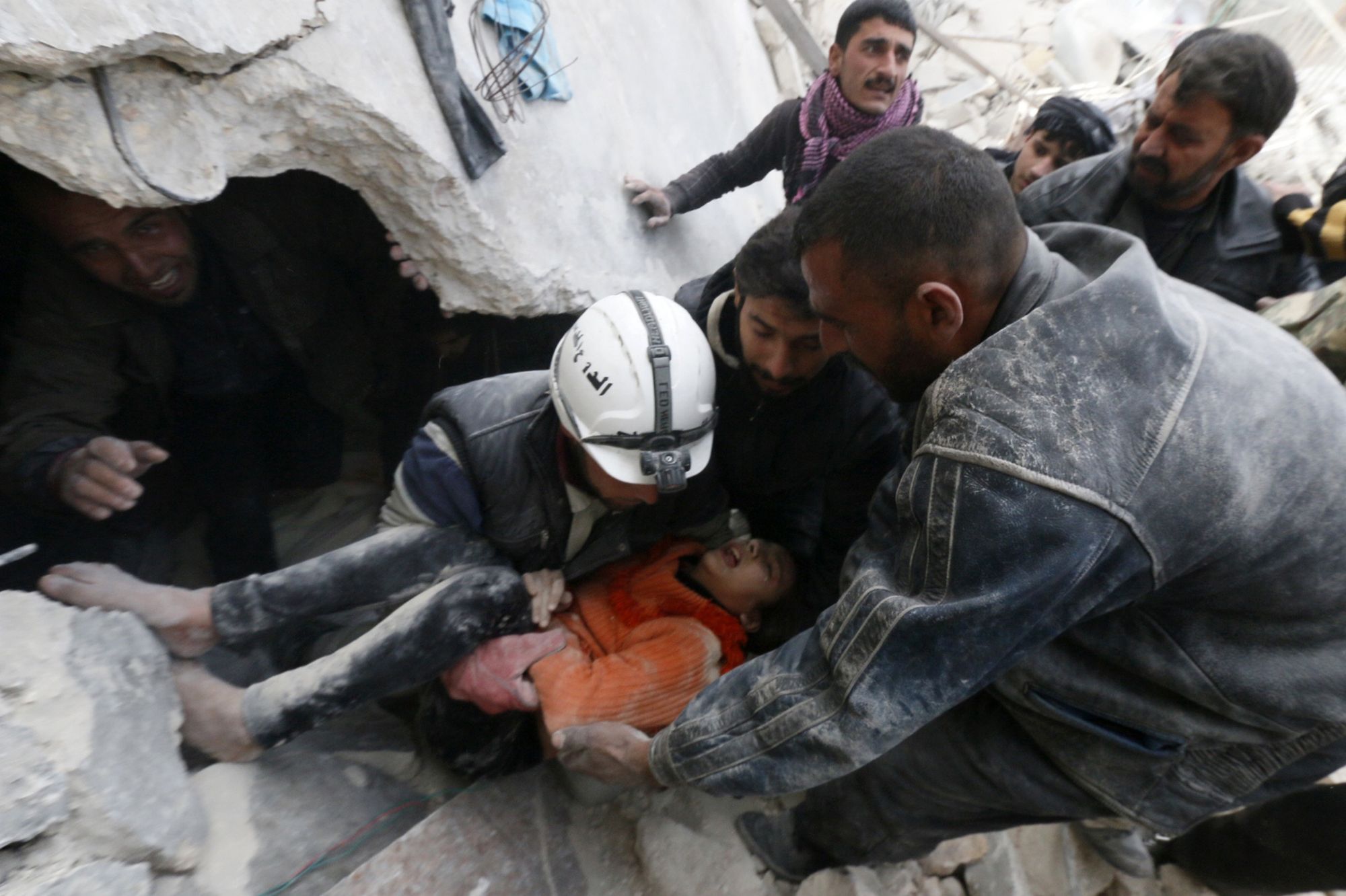
According to David Nott, a British emergency surgeon volunteering in Syria for Medecins sans Frontiers (Doctors without Borders) — whose hospital in Kunduz, Afghanistan, was systematically razed to the ground by the US military earlier this month — Assad’s barrel bombs have “literally razored east Aleppo to the ground.”
Now as confused Western antiwar icons cheer Putin on, the Russian leader’s offensive has focused less on hitting the Islamic State (ISIS), than on hitting the US-led coalition backed rebel forces making the most gains against Assad.
Russia’s focus on taking back territory held by non-ISIS rebels meant that in early October, as PHR reported, Russian airstrikes hit three civilian medical facilities in Hama, Idlib and Latakia. Two of the same facilities had previously been attacked with barrel bombs by Assad’s forces.
Come to the party
For those who take issue with my characterisation of Russian and Iranian actions as an ‘invasion’ because these powers were ‘invited’ in by the ‘legitimate’ government of Syria, a little soul-searching is in order.
The US has used precisely the same bankrupt legal mechanisms to justify sending military forces to Iraq and Afghanistan, on the ‘invitation’ of corrupt, cronyist regimes installed by the US.
The Assad family’s 40 plus year reign over Syria has about as much ‘legitimacy’ as the repressive Gulf regimes the West is working with against him.
Clay Clairborne, of Wikileaks’ Global Intelligence Files research team, documents how a CIA coup in Syria in 1949, followed by further CIA coup attempts, paved the way for the rise of Hafez al-Assad. When the Baath Party came to power in Iraq in 1963 with CIA and MI6 assistance, the rollover effect in Syria helped Hafez’s Baathists cease power — conveniently challenging the pan-Arab nationalist project of Gamel Abdul Nasser.
The Assads consolidated power by ruthlessly purging Sunnis from government, marginalising them from society, and courting US empire — acting as US ‘guard-dog’ in Lebanon, supplying 17,000 troops for Bush Snr.’s 1991 Gulf War, and earning the accolade of being among “the most common destinations for rendered suspects” on behalf of the CIA.
Hafez’s son, Bashar, largely fell foul of the US due to his growing allegiance to Iran. Even so, Obama’s hostility to Assad should be contextualised against the American president’s efforts to court Assad from 2008 onwards, brutal human rights abuses notwithstanding.
As Clairborne has shown in excruciating detail, secret US diplomatic cables reveal that Obama’s concern was not the lack of Syrian democracy, but compelling Assad to distance himself from Iran, while cracking down on Palestinian groups in Lebanon and Damascus.
One secret cable from the US embassy in Damascus dated 10th September 2009 explored how “US government and private sector contacts could dramatically expand our access and influence,” but would need “concrete Syrian actions on Lebanon and Iraq for our engagement to continue.”
The cable suggested dangling “what the Syrians really want — relaxation of sanctions and visits by high ranking officials to expand our dialogue on core issues — as a payoff once Syria has demonstrated its intent to utilise these contacts.” If successful, US engagement with Syria:
“… may increase our ability to persuade senior Syrian leaders that their country’s interests is better served by more constructive policies that would bring even closer US-Syrian ties.”
How do these maneouvres square with reports that the US and Britain were planning covert action in Syria as early as 2006?
From Bush’s sticks and stones, to Obama’s carrots and sticks
State Department cables obtained by Wikileaks show that the US was working to undermine Assad’s regime as early as 2006, by fomenting sectarian tensions, isolating Syria politically, and funding opposition groups.
Roland Dumas, former French foreign minister, told French national TV that in 2009 he was warned about secret preparations for “gunmen to invade Syria” by UK Foreign Office officials that year.
Such covert preparations, while certainly all too real, were part of a wider strategy of pressuring the Assad regime to wean itself away from Iran and oblige by US regional designs.
So although the Obama administration had adopted a policy of rapprochement with Assad, the ultimate objective remained a major realignment of Syrian policy — to be secured through diplomatic engagement as well as the threat of force.
Other cables, for instance, reveal that Obama officials were quite happy for Assad to believe the US was covertly preparing plans for regime change, while simultaneously engaging in diplomacy, presumably to leverage the desired change.
A secret US cable dated 28th April 2009 sent to the CIA, National Security Council, the Secretary of State, the White House, Paris, and London, confirms that under Obama the US had both options — “regime change” and “behaviour reform” on the table — but was transitioning to the latter for strategic reasons:
“US policy may aim less at fostering ‘regime change’ and more toward encouraging ‘behaviour reform.’ If this assumption holds, then a reassessment of current US-sponsored programming that supports anti-SARG [Syrian Arab Republic Government] factions, both inside and outside Syria, may prove productive as well.”
The cable shows that a year after Obama took office, US-sponsored “programming” on Syria included fostering “regime change,” which was to be re-assessed to explore prospects for leveraging “behaviour reform.”
“The SARG would undoubtedly view any US funds going to illegal political groups as tantamount to supporting regime change,” acknowledged the cable.
“This would inevitably include the various expatriate reform organisations operating in Europe and the US, most of which have little to no effect on civil society or human rights in Syria.”
But the shift to a more “non-threatening” policy never actually occurred. Even as Assad’s security services homed in on US-funded civil society “programming” that Obama officials knew would be seen as “hostile,” those programmes continued.
Simultaneously, the Obama administration attempted to leverage this pressure to forge a closer relationship with Assad as a potential US client.
Assad: Obama’s great Arab reformer
In February 2009, then Senator John Kerry met Assad in Damascus to discuss Syria’s assistance in building a so-called Palestinian ‘unity’ government in which Hamas’ independence would be neutered; supporting US troop withdrawals from Iraq; endorsing US demands to monitor Iran’s nuclear programme; and come to an agreement with Israel over the Golan Heights.
Kerry was jubilant at the time. He told a press conference after his meeting with Assad:
“I believe very deeply that this is an important moment of change, a moment of potential transformation, not just in the relationship between the United States and Syria but in the relationship of the region.”
Kerry’s visit was followed by a string of US-Syrian official and unofficial diplomatic meetings — the carrot designed to pull Assad into the desired direction. As Assad’s enthusiasm for this process grew, while he continued to brutalise his own population through routine repression of political dissent, the threat of the covert US stick of ‘regime change’ receded into the background.
In the same year, Syria had renewed intelligence sharing on terrorism with the CIA and MI6, complying with a request received from President Obama himself, sent through his Middle East envoy, George Mitchell.
Even as the Arab Spring began to cascade across the region, taking off in Syria in January 2011 when a desperate citizen set fire to himself in protest, US officials were privately celebrating the prospect of an Israel-Syria treaty.
Secret Stratfor emails obtained by Wikileaks showed that Obama adviser Dennis Ross had told the White House that Assad was “ready to move away from Iran and reduce relations with Hezbollah and Hamas, and work with the United States in the fight against terrorism.”
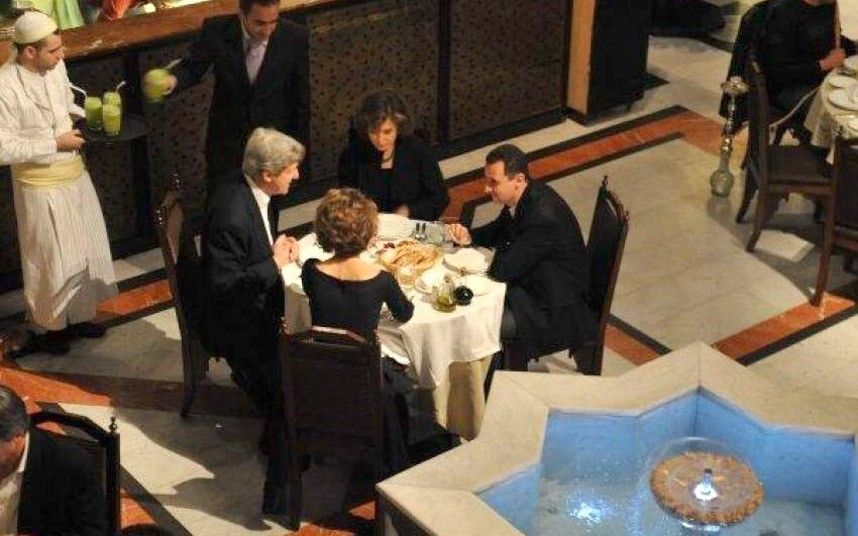
As the protests accelerated, along with Assad’s crackdown on the demonstrators, John Kerry was nonplussed. He told an audience at the Carnegie Endowment for International Peace:
“President Assad has been very generous with me in terms of the discussions we have had… So my judgment is that Syria will move; Syria will change, as it embraces a legitimate relationship with the United States and the West and economic opportunity that comes with it and the participation that comes with it.”
Assad: Obama’s green light for slaughter
In fact, one of the key signals that emboldened Assad in his domestic brutality was the Obama administration’s assurances at the time that they would not intervene military in Syria.
When asked whether the US would respond in Syria in the same it had done in Libya, then Secretary of State Hillary Clinton’s reply was unequivocal:
“No… There’s a different leader in Syria now. Many of the members of Congress of both parties who have gone to Syria in recent months have said they believe he’s a reformer.”
In other words, the Obama administration effectively gave Assad the ‘green light’ to crackdown.
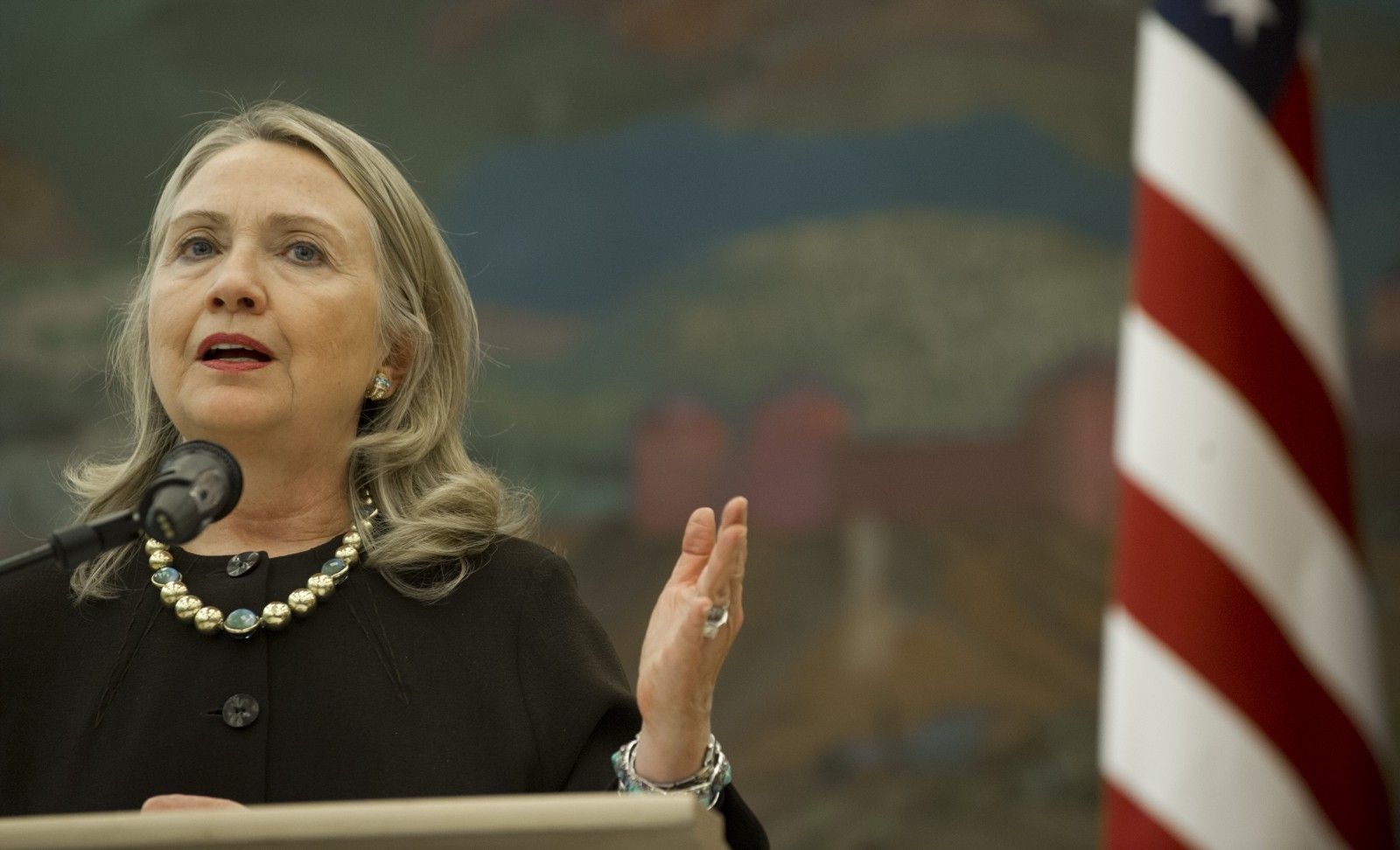
Three days after Clinton’s words, Assad made a speech rescinding the regime’s earlier promise to lift the 48 year old draconian state of emergency law. Five people were killed by Syrian police in ensuing protests, followed by a further 25 civilians being massacred the next day.
The US switched decisively back to its policy of ‘regime change’ only when it determined that Assad’s brutal response to the Arab Spring protests in Syria was not going to quell the discontent, but likely accelerate it.
No more carrots
When Syrian authorities arrested and tortured “a group of teenagers who painted revolutionary slogans on a school wall,” as Britain’s leading medical journal The Lancet reported, US and British officials were silent.
“Security forces opened fire on the pro-democracy demonstrators, killing several and as a result, more protestors took to the streets. The unrest triggered nationwide protests demanding President Bashar al-Assad’s resignation.”
As protests picked up, Assad’s police-state violence against peaceful demonstrators escalated using live-fire ammunition, tear gas, and water cannons, with activists being beaten, detained and tortured.
The speed with which the protests transitioned into an armed rebellion can be explained by the role of Western covert operatives.
Other leaked documents from December 2011 reveal that US and British special forces had long been on the ground in Syria, working to build the FSA into a force capable of destabilising Assad’s regime.
The Stratfor email described a meeting with US, French and British military intelligence officers confirming that the idea was to train Syrian rebel groups to “commit guerrilla attacks, assassination campaigns, try to break the back of the Alawite forces, elicit collapse from within.”
Although some Syrians had begun picking up arms in response to the wave of military repression unleashed by Syrian security forces, they were not doing so at the behest of the US, which had clearly been caught off guard by the scale of the uprising.
One US intelligence officer conceded:
“… there isn’t much of a Free Syrian Army to train right now anyway, but all the operations being done now are being done out of ‘prudence.’”
So the US enrolled several regional allies in covert rebel sponsorship operations that, however, empowered Islamist and jihadist groups, many with little local legitimacy in Syria.
Promoting war crimes, aborting democracy
There can be no doubt, as Barak Barfi of the New America Foundation remarks, that what began as a populist grassroots uprising against Assad’s dictatorship, was increasingly co-opted by foreign powers — Saudi Arabia, Qatar, the UAE, Kuwait, and Turkey — disproportionately empowering Islamist militant factions.
That process has meant that the most powerful rebel groups in Syria, Ahrar al-Sham and Jabhat al-Nusra (al-Qaeda in Syria), share a dubious vision for a future Syrian state excluding democracy, despite giving lip-service to the idea of empowering the population.
Much has been made, for instance, of the potentially progressive implications of Ahrar al-Sham’s supposed revisionist school of jihadism, which has reverted to adapting the Salafi-jihadist theory of Osama bin Laden’s mentor, Abdullah Azzam. Yet it was Azzam who advocated the legitimacy of targeting innocent civilians through ‘jihad’ as a mechanism to evict the “kuffar” (infidels) from “Muslim lands” through perpetual pan-Islamist war.
It is no surprise then that Ahrar, al-Nusra and other Islamist factions have been responsible for some of the worst war crimes committed by rebel forces against civilians during the conflict.
While the UN has extensively documented the Assad regime’s overwhelming role in mass murders, torture, rape, enforced disappearances, siege warfare and aerial bombardment, it also highlighted how Syrian Islamist rebel groups were operating draconian detention camps where they systematically kidnapped and tortured civilians.
Last year, a study published by the Combating Terrorism Center of the US Army’s West Point Military Academy found from surveys of FSA fighters that although rebel defectors are generally “driven to Islamist groups not primarily due to ideological motivations, but rather for instrumental reasons…
“… once inside the group, they are vulnerable to elite manipulation… Islamist groups appear to be having great success harnessing and exploiting Syrian anger for purposes well beyond fighting the al-Assad regime, which is why the current drive in Islamist recruitment in Syria could have important spillover consequences for conflict elsewhere.”
That does not mean there are no localised rebels comprising Syrians who oppose Assad and extremism. But as Al-Jazeera America reporter Michael Pizzi observes:
“The FSA is currently the weakest force on the ground in Syria, a result not only of inadequate foreign backing compared with that of rival Islamist and extremist factions, but of its own internal divisions, byzantine leadership structure (based in Turkey) and rampant corruption.”
That explains the high level of FSA defections to the more militant factions, and the consistent failure of Obama’s rebel training programmes to buttress a ‘moderate’ force capable of rivaling the militants already being funded by the Gulf states and Turkey.
But the US wasn’t interested in democracy.
A new study in the Journal of Aggression, Conflict and Peace Research finds that the shift from nonviolent to violent action “harmed the revolution,” impeding its capacity to achieve its democratic aspirations. Using empirical data, the study concludes that “the impact of the militarisation has been destructive without fulfilling the uprising’s goals.”
Proxy war
Foreign interference thus effectively aborted the prospect of an independent nationalist democracy in Syria, and continues to do so.
As Assad, backed by Russia and Iran, escalated state-terror to put down an indigenous insurgency that had become co-opted by regional powers, so did those powers escalate their support to their favourite extremists.
The available data, though sparse and unreliable compared to the scale of the violence, consistently confirms that both Assad and rebel forces routinely commit grave war crimes and crimes against humanity with utter impunity; but it is also clear that Assad’s military bears by far the greater responsibility for the violence.
While government aircraft have strafed civilian areas on a daily basis causing mass casualties, independent investigators reporting to the UN Human Rights Council report that rebel groups have also undertaken indiscriminate shelling and imposed “devastating” sieges.
Both Assad’s regime and Islamist rebels in particular have committed “acts of sexual violence” including rape, sexual slavery, forced pregnancy, and forced prostitution — the main perpetrators being al-Nusra, Ahrar, al-Islam Brigade, Aknaf Bait al-Maqdis Brigades, and Ansar Bait al-Maqdis Brigades.
Assad’s strategy — initially green-lighted by the US — has backfired.
His kneejerk resort to wanton violence from the inception of domestic unrest threw fuel on the fire of the armed insurgency. Seeing the goalposts shifting so rapidly, the US moved to rapidly mobilise covert actors in the region in an effort to control the outcome.
Assad’s decision to rely on bullets and bombs to secure his reign has ultimately led him to lose control of almost 83% of the country.
It is the prospect of losing their state-terrorist proxy that has prompted Russia and Iran to intensify their support for Assad.
Ironically, though, the Russia-Iran geopolitical gambit feeds directly into an emerging US ‘plan B’.
In September, Pentagon intelligence chief Lieutenant General Vincent Stewart admitted that he expected Syria to eventually split into “two or three parts,” echoing earlier statements by outgoing US commander in Iraq, General Ray Odierno.
The UN’s special envoy for Syria, Staffan de Mistura, similarly observed this month that Syria is already experiencing a de facto partition, and that if the chaos continues, partition may need to be formally accepted despite it being a worst-case scenario.
Russia and Iran appear to be moving along the same lines, with a view to shore-up an Assad-ruled mini-state, leaving the rest of Syria in the hands of IS, other Islamist rebels, and the Kurds.
In the process, the once-vaunted resistance group Hezbollah and paramilitaries it has trained, have increasingly fallen from grace through complicity in Assad’s war crimes — including carrying out summary executions of defenceless, wounded Syrian civilians at point-blank range.
Terror on terror
The problem is that Putin, of all people, has forgotten the lessons of 1979.
Former National Security Adviser to President Carter, Zbigniew Brzezinski, once gloated that the US had fomented unrest in Afghanistan six months before the Soviet Union invaded, precisely to provoke the USSR into an unwinnable military adventure:
“We did not push the Russians into invading, but we knowingly increased the probability that they would… That secret operation was an excellent idea. The effect was to draw the Russians into the Afghan trap.”
The legacy of that “excellent idea” lives on today in the form of the Islamic State now inhabiting parts of of Iraq and Syria.
Yet it seems Russia has not learned any lessons from the Afghan trap, despite watching the US repeat the same mistakes again and again from Vietnam to Iraq — the chief one of which is simply that military violence tends to inflame the grievances that fuel terror, rather than stopping terror.
“If he wants to jump into that mess, good luck,” one Obama official said of Putin’s new Syrian adventure, directly referencing Russia’s less-than-stellar Afghan experience a generation ago. This was echoed by Obama’s Deputy National Security Adviser Tony Blinken, who observed that the Russians may be “making a terrible strategic mistake” and run the risk of getting bogged down “into a quagmire.”
Since the 1960s, only 7% of terrorist groups have been eliminated through full military engagement, according to the Global Terrorism Index produced by the Institute for Economics & Peace. That report also found that 82% of lives lost to terrorism occurred in just five countries, Iraq, Afghanistan, Pakistan, Nigeria and Syria — all of which had been subject to significant state-sponsored violence, and four of which had experienced escalating terrorism in the context of covert and overt Western military actions.
By stepping into the Syrian quagmire, Russia and Iran are inviting the most extreme jihadist factions to unite in a grand, regional, sectarian war of attrition that would make Afghanistan during the Cold War look like a cakewalk.
Late last year, in response to US bombing, a source close to al-Nusra’s leadership said:
“Most Nusra fighters want to end the fighting with Isis so there can be complete focus on Assad and the west.”
That tactical alliance has not yet transpired, but now that Russia and Iran are running amok, guns blazing, it is far more probable.
Little do the new terror-hunters realise that their crusade will only escalate civilian slaughter, stoke grievances, and vindicate the more extreme rebel groups calling for a unified Islamist insurgency.



